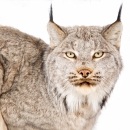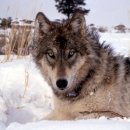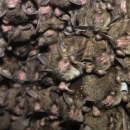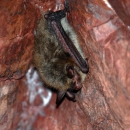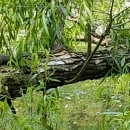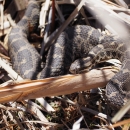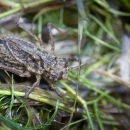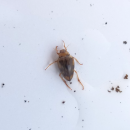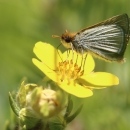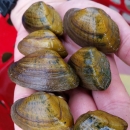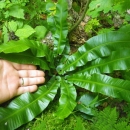Featured Species
Kirtland’s Warbler
Through hard work and collaboration between the U.S. Fish and Wildlife Service, U.S. Forest Service, Michigan Department of Natural Resources and many other organizations and individuals, the Kirtland’s warbler was delisted from endangered species list. However, as a conservation-reliant species, this songbird depends on annual management. Our office works closely with the Kirtland’s Warbler Conservation Team to continue this valuable work managing the jack pine forests and Kirtland’s warbler breeding habitat.
Freshwater mussels
Freshwater mussels are one of the most critically imperiled groups of organisms in the world. Michigan is home to four federally endangered freshwater mussels: Clubshell, Snuffbox, Northern Riffleshell and Rayed Bean. Implementing measures to conserve and restore freshwater mussel populations directly improves water quality in lakes, rivers and streams, throughout Michigan. An adult freshwater mussel filters anywhere from 1 to 38 gallons of water per day. Mussels are also considered to be ecosystem engineers, stabilizing substrate and providing habitat for other aquatic organisms. Taking proactive measures to conserve and restore freshwater mussels will improve water quality, which has the potential to positively impact human health and recreation in the State of Michigan.
Piping Plover
The piping plover is a small, endangered shorebird with a sand-colored back and white below. When first listed as endangered in 1986, only 17 pairs nested in Michigan. The Great Lakes population of piping plovers is now endangered for two main reasons: habitat loss and predation. The beaches that piping plovers require for nesting habitat are also very desirable to humans for development and recreational use. Piping plovers nest only on beaches and prefer beaches with gravel. It is a special opportunity to be able observe the Great Lakes population of piping plovers since there are only between 75 and 80 nesting pairs in the entire Great Lakes area. Due to extensive monitoring and protection efforts from many state, federal, zoo, academic and non-profit partners, piping plovers have expanded their range back into Wisconsin, Illinois, New York and Ontario, Canada.
Bald Eagle
Contaminants specialists with the U.S. Fish and Wildlife Service were a vital part of bringing bald eagle populations back after they were nearly eliminated in Michigan and other areas following the introduction of DDT and similar pesticides. Bald eagles now nest in most of the counties in Michigan and are no longer listed as threatened or endangered under the Endangered Species Act. Bald eagles are still protected under other laws, however, and our biologists can assist people in understanding when they need to apply for permits if they might be disturbing bald eagles or their nests. Our biologists continue to monitor bald eagle nesting sites and populations, as well as continuing to work on their full recovery, especially in some areas of the state that are still contaminated with legacy pollutants.

